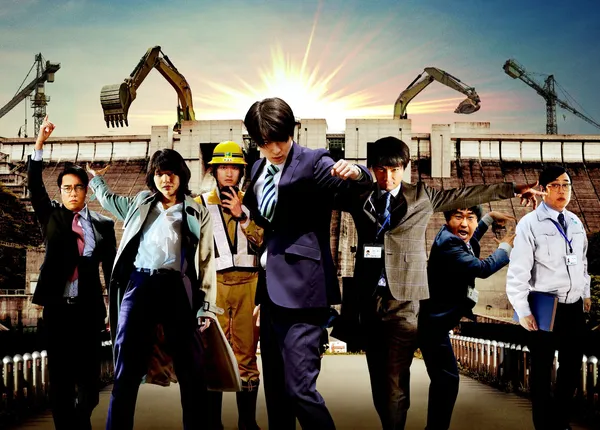Eye For Film >> Movies >> Project Dreams - How To Build Mazinger Z's Hangar (2020) Film Review
Project Dreams - How To Build Mazinger Z's Hangar
Reviewed by: Jennie Kermode

How would you feel if you worked in a respectable job which you'd trained hard for over many years, and one day your boss came up to you and told you to start work on a project for something that was never actually going to be developed in reality and was based on a kids' TV series? It's the sort of thing that happens in reality from time to time as companies pursue intellectual exercises to sharpen up the skills of their employees, but when the boss is grinning and jumping around like a kid himself, and when you're told there's no budget, you'd be justified in feeling nervous.
That's the pretext of Tsutomu Hanabusa's workplace comedy, which manages surprisingly well to joke about fans, joke along with fans and explore some more serious themes. The cartoon it refers to - itself based on the manga Mazinger Z - ran on Fuji TV from 1972 to 1974, so although this is set in 2003 (with some nice period touches) we have to assume that the younger characters have seen it on repeat. Its robot star will be vaguely familiar to viewers around the world. The boss of the engineering company where the story is set tells his workers that another company is designing giant robots. it's their job to design the hangar - but given the rather elaborate ideas of the original animators, that presents some serious challenges.
There's a lot of talk here about actual engineering, presented in such a way that viewers are able to solve problems alongside the characters even if they are armed only with imagination and not much expertise. Imagining things like this is, of course, why a lot of people get into engineering in the first place, but Japan's corporate culture makes it very hard to admit of such interests. It's nice to see the characters examining their own feelings about this, gradually opening up to one another or even just to themselves. This touches on something larger: the importance of imagination and ambition in shaping what we seek to achieve through technology. Although at first everyone laughs at the Mazinger Z project, they gradually start to acknowledge feelings of inspiration and to reflect on what lay behind celebrated engineering achievements of the past.
With science and fantasy often placed at odds, it's a pleasure to see a film that celebrates how they can serve each other. What's more, though episodic in nature, it does a good job of exploring all these ideas in a dramatic context, with character interaction that make sense. One middle aged engineer is bitterly resentful of the project until he puts the cartoon on at home of research and sees how it excites his small son. Another finds himself increasingly carried away by the story within the cartoon and wondering if this is all part of a top secret government plan occasioned because its villains are real. There's a sweet romantic subplot, a lot of self discovery and a celebration of the joy that can arise from the obsessive pursuit of new ideas in one's chosen field.
Doubtless far too nerdy for a mainstream audience - and even for some of those attending Fantasia 2020, this is certainly a cinematic oddity, but it has a warm heart and its sharp observations of workplace culture are widely relateable. Even if you go into it knowing nothing about Mazinger Z or giant robots in general, you'll find it accessible enough to entertain.
Reviewed on: 07 Sep 2020
















